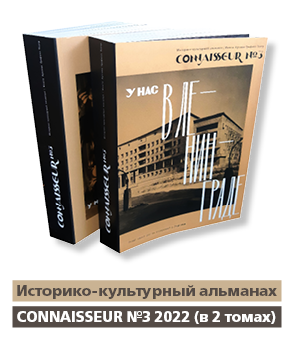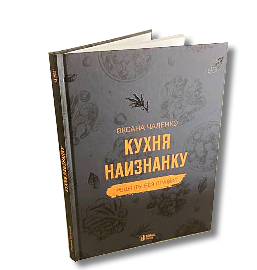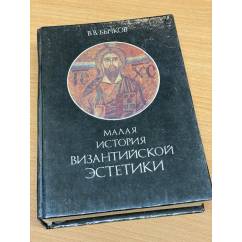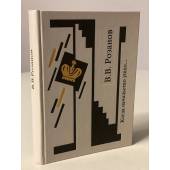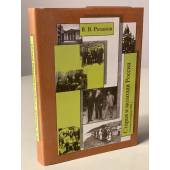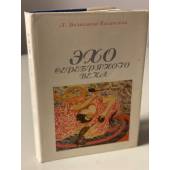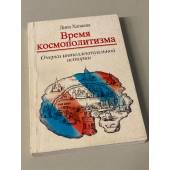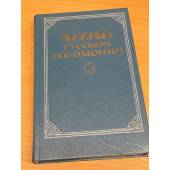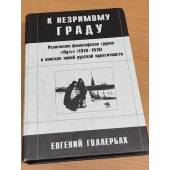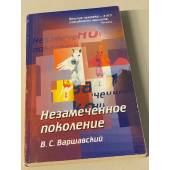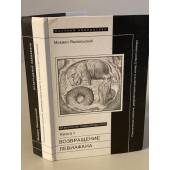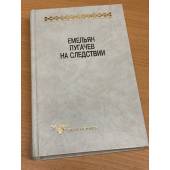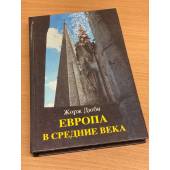
Cart
0
Product
Products
(empty)
No products
Free shipping!
Shipping
0,00 €
Packing fee
0,00 €
Total
Product successfully added to your shopping cart
Quantity
There are %d items in your cart. There is 1 item in your cart.

Categories
- Albums (2085)
- Antique (before 1850) old books (before 1941) (584)
- Art and culture (5360)
- Audiobooks, compact discs (CD) (121)
- Autographed books (248)
- Board games (19)
- Books for school (4689)
-
Books in foreign languages
(8488)
- Books in Altai (4)
- Books in Azerbaijani (47)
- Books in Belarusian (46)
- Books in Bulgarian (2)
- Books in Dutch (2)
- Books in English (6657)
- Books in Estonian (10)
- Books in Finnish (7)
- Books in French (43)
- Books in Georgian (37)
- Books in Greek (2)
- Books in Hungarian (6)
- Books in Italian (12)
- Books in Japanese (7)
- Books in Karelian (3)
- Books in Kyrgyz language (6)
- Books in Latvian (46)
- Books in Lithuanian (7)
- Books in Norwegian (4)
- Books in Polish (14)
- Books in Portuguese (2)
- Books in Slovak (2)
- Books in Spanish (17)
- Books in Swedish (3)
- Books in Tajik (34)
- Books in the Adyghe language (3)
- Books in the Balkar language (8)
- Books in the Bashkir language (73)
- Books in the Buryat language (5)
- Books in the Kalmyk language (8)
- Books in the Karachai language (1)
- Books in the Komi language (5)
- Books in the languages of the peoples of the Caucasus (7)
- Books in the Mari language (17)
- Books in the Mokshan language (1)
- Books in the Mordovian language (3)
- Books in the Nogai language (1)
- Books in the Tatar language (101)
- Books in the Udmurt language (10)
- Books in the Yakut (Sakha) language (27)
- Books in the Yarzyan language (2)
- Books in Ukrainian (976)
- Books in Uzbek (9)
- Chuvash language books (29)
- Kazakh language books (8)
- Business. Economy (1622)
- Calendars (41)
-
Children's Literature
(10394)
- Books for parents (354)
-
Children's creativity and leisure
(923)
- Children's games. Experiments and experiments (16)
- Coloring pages (12)
- Crafts, cooking for children (6)
- Drawing for children (11)
- Make with your own hands (29)
- Modeling, application (7)
- Organization of children's parties (2)
- Origami, paper craft (5)
- Puzzles, crosswords for kids (8)
- Questionnaires, diaries, albums (1)
-
Educational and educational literature for children
(1742)
- Attention. Imagination. Memory (27)
- Basic security (4)
- Creative development (46)
- Foreign languages (102)
- General development. Manuals, reference books (83)
- General preparation for school (45)
- Introduction to the outside world (69)
- Logic. Thinking (32)
- Math and counting (43)
- Teaching reading and writing (91)
-
Educational literature for children
(772)
- Biographies for children (37)
- Books for boys (21)
- Books for girls (19)
- Culture, art, religion (48)
- Encyclopedias, reference books and other educational literature for children (182)
- History for children (86)
- Nature and the environment (244)
- Psychology. Etiquette (12)
- Science, technology, transport (54)
-
Fiction for children
(4343)
- Books for kids (111)
- Books on cartoons and films. Comics (81)
- Detectives and adventures for children (193)
- Foreign prose for children (307)
- Myths. Legends. Historical prose for children (69)
- Poetry for children (147)
- Russian prose for children (417)
- Science Fiction, Fantasy and Horror for Kids (118)
- Tales (503)
- Tales and stories about animals (144)
- Soviet children's books (902)
- Toy books (40)
- Collected works. Multivolume editions (3674)
- collection sets (53)
- Comics (53)
- Cookery (1373)
- Dictionaries. Phrasebooks (1324)
- Electronic books (10)
- Encyclopedia (1020)
- Engravings (7)
- Feng Shui (112)
- Fiction (84412)
- German and Germany (35723)
- gramophone records, vinyl (131)
- Guides (2055)
- Healthy lifestyle. Healthy eating. Fitness (1805)
- History (9766)
-
House. Life. Leisure.
(7693)
- Dom. Life (3169)
- Erotic books, books about sex, kamasutra (193)
- Hobby. Leisure (1663)
- Reference Literature (2171)
-
Sport
(956)
- Aerobics. Fitness. Yoga. Dancing (31)
- Board games (158)
- Combat and martial arts (82)
- Extreme sports (12)
- Gymnastics. Light and weightlifting (8)
- Olympic Games (13)
- Other sports (51)
- Physical culture and sport (73)
- Self-defense. Survival (20)
- Sport games (23)
- Tourism (85)
- Water sports (28)
- Winter sports (18)
- Kits (different books) (139)
- Kits (magazines) (60)
-
Magazines and newspapers
(2550)
- Architecture, interior (9)
- Astrology, esotericism (35)
- Bills (233)
- Calendars 2020 (1)
- Calendars 2021 (3)
- Cars, hunting, fishing (15)
- Celebrities, ZhZL (33)
- Children's magazines (12)
- Computer, technology (4)
- Cooking and Recipes (25)
- Crosswords, Scanwords (2)
- Editions with TV program (133)
- Entertainment magazines (7)
- Fashion, style, beauty (17)
- History (111)
- Hobbies, interests (104)
- Home, family, leisure (74)
- House, garden, vegetable garden (34)
- Literature, theatre, music (235)
- Magazines for men (211)
- Magazines for parents (2)
- Magazines for women (108)
- Medicine, health (153)
- Religion (10)
- Russian press abroad (480)
- Science, technology, fantasy (168)
- Sewing, knitting, needlework (8)
- Society, politics (636)
- Special Editions (57)
- Travel, countries (14)
- Maps, atlases (671)
- Military business. Weapons. Special services (4062)
- Miniature books (148)
- Music. Sheet music (1039)
- Postage stamps (92)
- Postcards (191)
- Posters (37)
-
Professional, educational literature
(24598)
-
Applied sciences. Technique
(2517)
- Agriculture. Veterinary medicine (41)
- Architecture (360)
- Chemical industry (104)
- Construction (445)
- Design (136)
- Energy (68)
- Engineering. Instrumentation (184)
- Food industry (19)
- Jewellery (22)
- Life safety (46)
- Light industry (39)
- Metallurgy (28)
- Mining (83)
- Nanotechnologies (5)
- Oil and gas industry (53)
- Other industries (101)
- Polygraphy (8)
- Radio engineering. Electronics. Communication (263)
- Technical Sciences (330)
- Technology of production (100)
- Timber and wood chemical industry (13)
- Transport (183)
-
Computer Literature
(472)
- Administration. Information security (5)
- Computer for … (16)
- Computer networks. Internet (23)
- Databases (8)
- Design systems (CAD/CAM) (1)
- General questions (41)
- Graphics, design, multimedia, games (27)
- Hardware (4)
- Informatics (27)
- MS Office. Microsoft office programs (11)
- Operating systems (12)
- PC work for beginners (18)
- Programming languages and environments (37)
- Humanities (8812)
-
Legal Literature
(993)
- Civil law (54)
- Civil procedural law. Judiciary (8)
- Comments (12)
- Constitutional law. Administrative law (30)
- Criminal law (40)
- Criminology. Criminalistics (37)
- Customs law (8)
- Financial law (11)
- International law (34)
- Labor law. Social security law (9)
- Land law. Environmental law (3)
- Law enforcement agencies (23)
- Law in general. History and theory of state and law (29)
- Other branches of law (23)
- Regulatory acts. Reference literature (19)
- Right in everyday life (17)
- Textbooks and teaching aids (43)
- Workshops and practical aids (6)
-
Medicine and Health
(2412)
- Applied Medicine (43)
- Clinical Medicine. Internal Medicine (21)
- Cosmetology (20)
- Fundamentals of Medicine. Healthcare System (26)
- General pathology. General therapy (19)
- Narcology (12)
- Nervous system (29)
- Other branches of medicine (89)
- Pediatrics (51)
- Pharmacology. Toxicology (21)
- Popular and alternative medicine (1119)
- Psychiatry. Neuropathology. Sexopathology (71)
- Surgery (18)
- Monographs (1110)
- Natural sciences. Mathematics (2228)
- Social Sciences (5561)
-
Applied sciences. Technique
(2517)
- Religion. Esotericism (6376)
- Russian Abroad (books published abroad) (2598)
- Russian language (774)
- Russian language for children (Textbooks) (155)
- Soviet books until 1992 (12965)
- Yoga Books (158)
- Show All
More info
The expression "Byzantine aesthetics" has a broader semantics in Bychkov's work than it seems at first glance. "Byzantium" - i.e. the region that gave the classic examples of Christian culture, both material and spiritual. Those. "Orthodox aesthetics" (a term launched into scientific circulation by Bychkov) is somehow "Byzantine" or goes back to it. "Aesthetics" is understood extremely broadly, in the spirit of Losev, whose student was Bychkov, as the totality of all components of the "system of non-utilitarian relationships between a person and the world (natural, objective, social, spiritual), as a result of which he experiences spiritual pleasure. The essence of these relationships is reduced or to the expression of some meaning in sensually perceived forms, or to the self-sufficing contemplation of some object (material or spiritual).Spiritual pleasure (in the limit - aesthetic catharsis) testifies to the subject's superintelligent vision in the aesthetic object of the essential foundations of being, the secret truths of the spirit, the elusive laws of life in of all its integrity and deep harmony, about the realization, in the end, of spiritual contact with the Universe (and for a believer - with God), about breaking the connection of times and, at least momentarily, exiting into eternity, or more precisely, about feeling oneself involved in eternity. thus acts as a universal characteristic of all its complex of non-utilitarian relationships of man with the world, based on his vision of his original involvement in being and eternity, his harmonious inscription in the Universe. From these brief definitions, one can imagine the huge scale of the "Small History of Byzantine Aesthetics". Bychkov defines the periodization of his "Small History of Byzantine Aesthetics" as follows: I-III centuries. - the early Christian, or pre-Byzantine, period, when the active formation of the basic ideas and principles of Byzantine aesthetics proper began. 4th-7th centuries - the early Byzantine period, coinciding with the "golden age" (VI century) of Byzantine culture; it also accounts for the beginning of the flowering of Byzantine aesthetic thought, the formation of basic concepts, concepts, and the categorical apparatus. VIII - trans. floor. 9th century - the iconoclastic period, in which a detailed and comprehensive development of the theory of the image was carried out in connection with the fine arts - the theory of the cult image, icons. Deut. floor. IX-XII centuries (before the invasion of the crusaders) - the time of maturity and stabilization of artistic and aesthetic culture and aesthetic consciousness with a strong tendency to restore and idealize late antique and early Byzantine motifs. XIII - ser. 15th century - a period of confrontation between the church-hesychast and the anti-Kyzantian trends in Byzantine culture, which is declining towards sunset. Regarding the characterization of his "History of Byzantine Aesthetics" as "small", Bychkov writes: "Here is the first model of the author's reconstruction. Today, the author is convinced that it adequately reflects the real historical picture. [...] the study of primary sources continues. This explains the name monographs. The time for the "Great" or complete history of Byzantine aesthetics has not yet come."
Data sheet
| ISBN | 5-7707-2100-6 |
| Publisher | Христианская благотворительная просветительская ассоциация "Путь к истине" |
| Publication date | 1991 |
| Number of Pages | 408 |
| Bookbinding | Hardcover |
Same Products in Shop
| Name | Condition | Price | Company | Link |
|---|---|---|---|---|
| Малая история византийской эстетики | Adequate Condition | 4,80 € | View Product |



